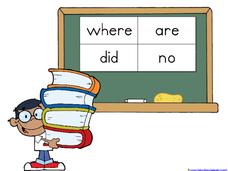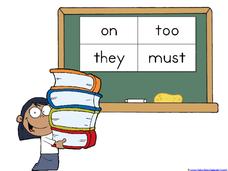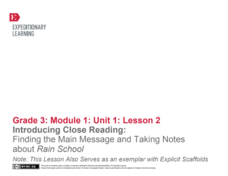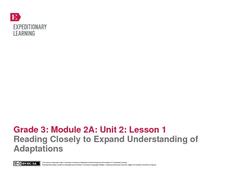1 plus 1 plus 1 equals 1
I Can Read! Sight Words Set #1
Focus on the fundamentals of reading with a series of sight word activities. Kids work with the words a, and, see, and the by connecting the dots, playing bingo, and finding the words in a mixed-up list.
1 plus 1 plus 1 equals 1
I Can Read! Sight Words Set #14
Study the sight words but, have, will, and into with a series of reading activities. With tracing lessons, matching games, and flash cards, the packet is a great first step to a successful reading education.
1 plus 1 plus 1 equals 1
I Can Read! Sight Words Set #13
Take the first steps to reading fluency with a set of language arts activities. Kids work on the sight words pretty, ran, so, and out with tracing worksheets and matching games.
1 plus 1 plus 1 equals 1
I Can Read! Sight Words Set #10
Focus on sight words with a series of worksheets for beginning readers. Kids can work on where, are, did, and no with matching games and tracing activities, and many more.
1 plus 1 plus 1 equals 1
I Can Read! Sight Words Set #15
Learn to read, step by step! A series of activities focuses on the sight words yes, that, he, and get, with matching games and flash cards to practice their word recognition.
1 plus 1 plus 1 equals 1
I Can Read! Sight Words Set #17
Take an important step into the world of reading with an activity about sight words. Kids review the words on, too, they, and must with tracing worksheets, flash cards, and reading activities.
EngageNY
Reading for Gist: “Middle Ages” Excerpt 1
Dig deep. Scholars dig deep for meaning while reading Middle Ages Excerpt 1. They begin by finding unfamiliar words and adding them to a word catcher. Pupils then take a close look at adversity in the text and complete an anchor chart.
EngageNY
Introducing Close Reading: Finding the Main Message and Taking Notes About Rain School
This second instructional activity in a larger unit is perfect for the beginning of the year because it explicitly teaches 3rd graders how to use close reading skills by identifying unfamiliar words, figuring out the gist, and defining...
EngageNY
Reading Closely to Expand Understanding of Adaptations
Third graders work to determine the main idea, recall key details, and answer questions using an informational text on the topic of animal adaptations. Using the non-fiction text "Staying Alive: Animal Adaptations" (provided) the teacher...
EngageNY
Close Reading of Bullfrog at Magnolia Circle: Main Ideas about the Bullfrog
As your class reaches the end of the book Bullfrog at Magnolia Circle, the seventh lesson in this literary unit helps third graders transition from reading narrative to expository writing. Scholars develop their note-taking skills as...
EngageNY
Mid-Unit Assessment: Close Reading of Bullfrog at Magnolia Circle: Bullfrog Life Cycle
The sixth lesson plan in this Bullfrog at Magnolia Circle unit assesses your third graders' ability to read and understand informational text. The included assessment asks learners to take notes about the main idea and supporting details...
1 plus 1 plus 1 equals 1
I Can Read! Sight Words Set #7
Your kindergartners will be reading before you know it after practicing their sight words! Work on and with an array of fun reading activities, such as bingo, connect-the-dots, and matching games.
1 plus 1 plus 1 equals 1
I Can Read! Sight Words Set #2
Practice reading common sight words with a series of enriching activities. From bingo to connecting the dots to matching words, the packet has something for everyone!
EngageNY
Reading and Talking with Peers: A Carousel of Photos and Texts about Frogs
Frogs are the theme of a lesson plan that challenges scholars to examine photographs, read informational texts, then ask and answer questions. Scholars work collaboratelively as they rotate through stations, discuss their observations,...
EngageNY
Reading for Gist, Answering Text-Dependent Questions, and Determining Author’s Purpose: Industrial Food Chain
A Reading Closely: Guiding Questions handout leads readers to discover the gist of The Omnivore’s Dilemma. While reading, pupils look closely at the words in the text and discuss their meaning. They use dictionaries when needed to answer...
K20 LEARN
Considering "Charles": Pictograms, Annotations, Reading Strategies, And Multimodal Responses
Shirley Jackson's short story, "Charles," provides middle schoolers with an opportunity to practice their close reading skills. Using the provided list of prompts, scholars read and reread the story, then create a multimodal response to...
EngageNY
Reading for Gist, Answering Text-Dependent Questions, and Determining Author’s Purpose: Industrial Organic Food Chain
After re-reading The Omnivore’s Dilemma using a Reading Closely: Guiding Questions handout, class members use sticky notes to annotate and determine the gist of the text. Finally, they use an Author’s Purpose graphic organizer to...
EngageNY
Reading for Gist and Answering Text-Dependent Questions: Local Sustainable Food Chain
Readers use sticky notes and a Reading Closely: Guiding Questions handout to record the gist of a different section (pages 161-166) in The Omnivore’s Dilemma. They then pair up and share their ideas. To end the lesson, readers complete...
EngageNY
Independent Reading: Final Product
Cheater! Scholars create independent reading cheat sheets to help others learn about a book. They rate the book, list quotes, and describe how they connected to the text. Readers share their cheat sheets with others and conduct a gallery...
EngageNY
Close Reading: “Dog Sleds” and “Kayak”
Visualize it! Scholars read pages 12–15 of The Inuit Thought of It and create a visual gist of the text. They then do a close read of the text and create a natural environment anchor chart before answering text-dependent questions.
EngageNY
Close Read, Part 1: “Taggot, the Blacksmith’s Daughter”
There would be no luck if it were not for bad luck. Scholars take a close look at the theme of adversity through multiple reads of Taggot, the Blacksmith’s Daughter. They place sticky notes on important details of the story and complete...
Curated OER
Fluency Instructional Routine: Read Regular Words
How many words can you read in one minute? Practice reading fluency, speed, and accuracy with this scaffolded lesson plan. This offers a full script if you need it, however it can also be utilized as an outline. Demonstrate the activity...
Novelinks
The House on Mango Street: List-Group-Label
Encourage close reading of the text and a focus on how Sandra Cisneros' develops her characters with an activity that asks teams to sort, group, and label character descriptions from The House on Mango Street.
Curated OER
Hoot: List-Group-Label
Word association is a great way to explore vocabulary and new ideas. In a unit about Carl Hiassen's Hoot, kids think about the word environmentalist and come up with additional words that they associate with environmentalism on sticky...
Other popular searches
- List of Reading Genres
- Reading and Listening
- Reading List of Words
- Middle School Reading List
- Fifth Grade Reading List
- Choral Reading List
- Short Story Reading List
- Guided Reading Check List
- Supplemental Reading List
- Summer Reading Lists
- 6th Grade Reading List
- American Poetry Reading List

























